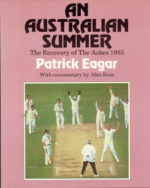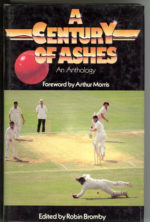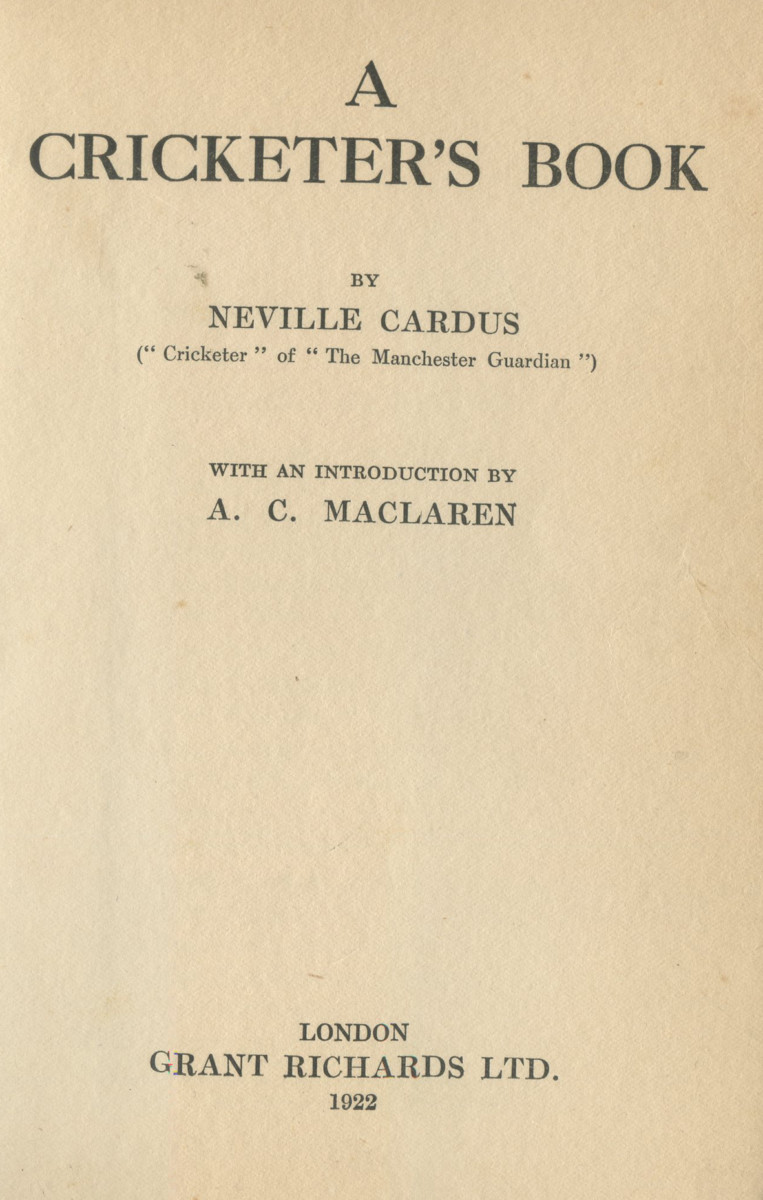Description
Introduction by A C MacLaren. Hardback, 1922 first edition, ex-libris. Complete. Fair condition only
Includes 1921 Ashes tour Test by Test coverage (Sir Neville is one of the most celebrated of all cricket writers).
Additional information
| Year Of Publication | |
|---|---|
| Other Notes | hardback, good, some minor faults (foxing on outer spine), reprinted edition |
1 review for Cardus, Neville – A Cricketer’s Book, ex libris
Add a review Cancel reply
You must be logged in to post a review.
Related products
-
Sale!

Eagar, Patrick – An Australian Summer
$16.50Original price was: $16.50.$8.25Current price is: $8.25. Add to cart -
Sale!

Bromby, Robin – A Century of the Ashes, bargain priced
$8.75Original price was: $8.75.$1.10Current price is: $1.10. Add to cart -

Jardine, Douglas – In Quest of the Ashes 1932-33 (reprint)
$22.00 Add to cart -
Sale!

Border, Allan – Ashes Glory (the 1989 tour)
$19.25Original price was: $19.25.$2.75Current price is: $2.75. Add to cart




Ken –
From The spectator.co.uk:
The literature of cricket can for the most part be divided into two categories. There are the books by men who understand cricket but do not know how to write, and the books by men who know how to write but do not understand cricket. In the course of a year many books and stories dealing with the game are published, but only rarely in a generation comes that rich combination the sportsman and the man of letters. To that small company, however, in which of contemporary writers only three—A. A. Milne, E. V. Lucas and P. G. Wodehouse—seem to be entitled to a place, another name, that of Mr. Neville Cardus, must now be added. His A Cricketers Book is written for sportsmen by a sportsman. It is the work of a man who knows cricket as only one who has learnt by playing it to love it can know cricket.
From a first glance at the contents it might well seem to be a miscellaneous affair. For it is a collection of articles contributed to the Manchester Guardian during the seasons of 1919-1921 ; and what reads well enough between columns makes usually a poor show between covers. Mr. Cardus’s essays, however, are improved by transportation, and although they have been written from day to day, although their appeal is to the moment, and the pages are filled with references to games and incidents that must inevitably in the course of a few seasons pass from memory. we do feel that this book stands as reasonable a chance of immortality as any that this generation has produced. As pavilion conversation in the hot sunshine of a July afternoon flits irresponsibly from one figure to another, from one match to another, so does Mr. Cardus’s narrative carry us from Hobbs to Richardson, from the test matches of 1921 to the mighty struggle of 1882, from Shaw to Parkin. There are anecdotes about the giants of the past and vivid descrip- tions in the Homeric manner of the great battles of to-day and yesterday. Subtle comparisons are made. The art of cricket is interpreted through the familiar algebra of another art. Of Spooner it is said that ” if his decorative formality makes him a Pre-Raphaelite so to say, he is a Pre- Raphaelite of the Millais order—the Millais who painted Autumn Leaves.’ There is warm colour in his play as well as the clear natural outlines.” There is sentiment, too, in these pages, a vague regret for the temporal quality of life. ” A great match . . . . great days . . . . great men . . . . all gone . . . . far away . . . . departed glory ” . . . . ” the pathos which age and faltering flesh bring to the cricketer whose love of the game to the end burns with a bright light.” And of the greatest hearted of all fast bowlers Mr. Cardus writes :—” It was sad to see Richardson grow old, to see the fires in him low. Cricketers like Richardson would not know old •age in the Never, Never Land’ of our desires. Every springtime ought to find them newborn, like the green world they live in.”